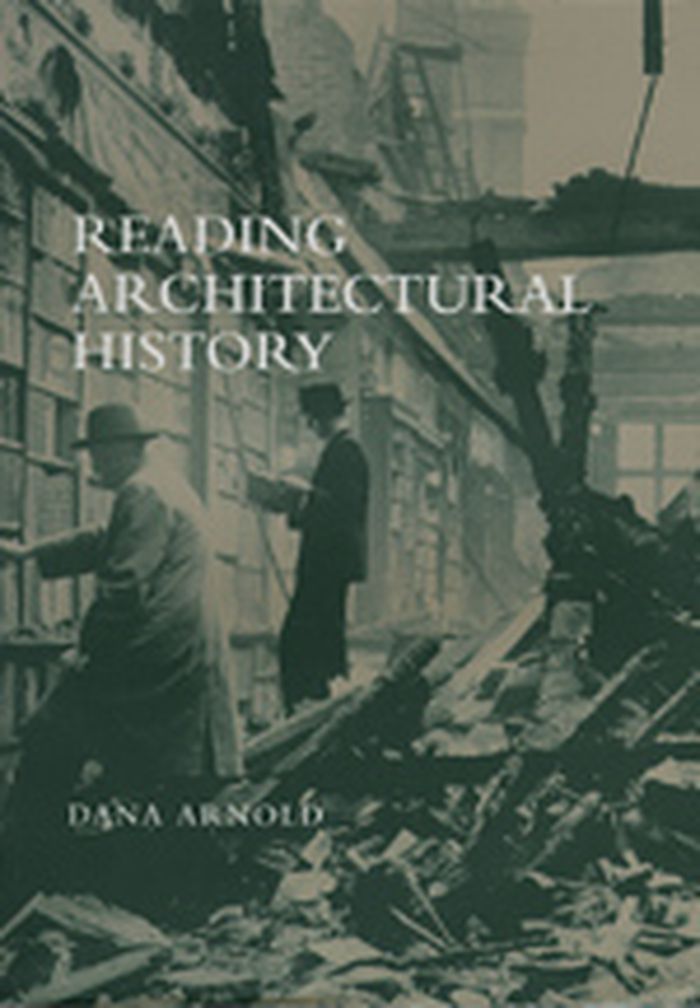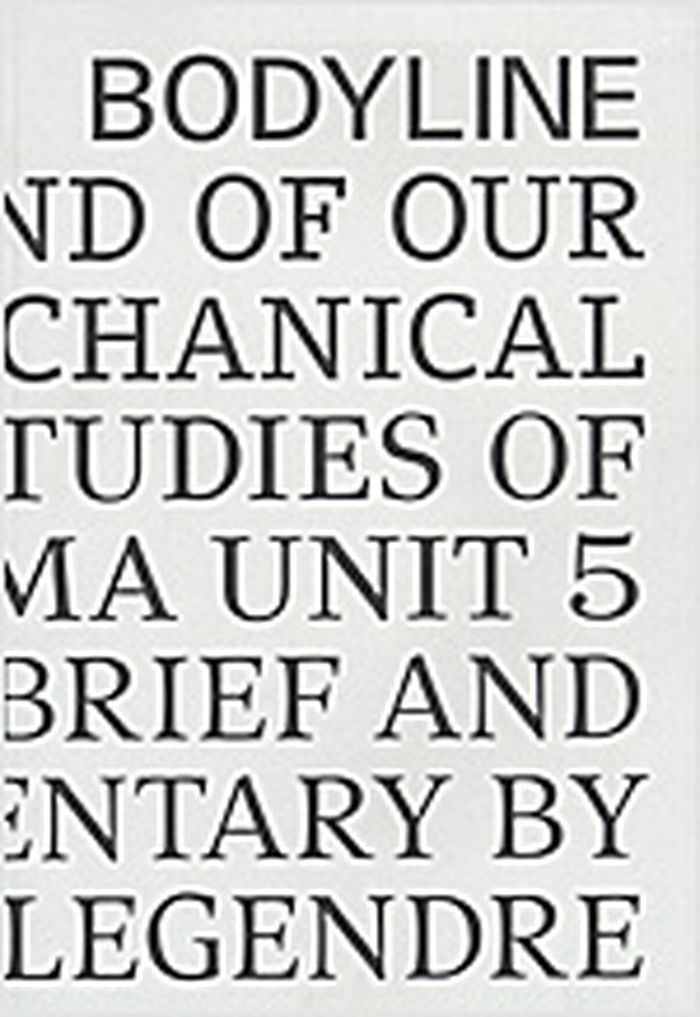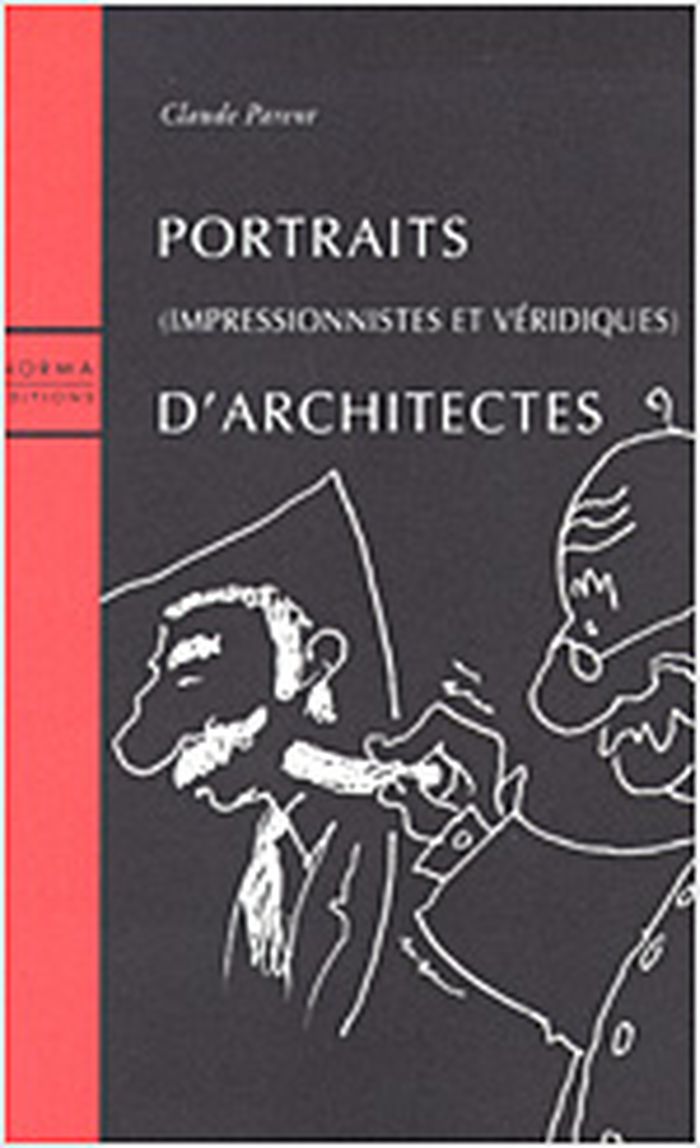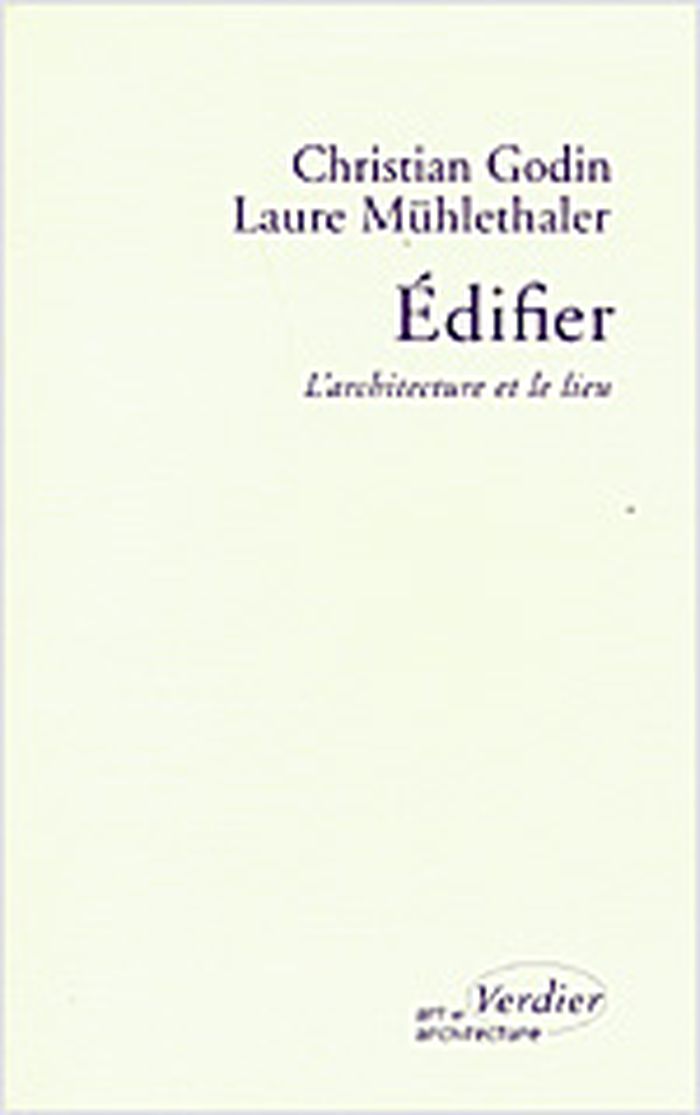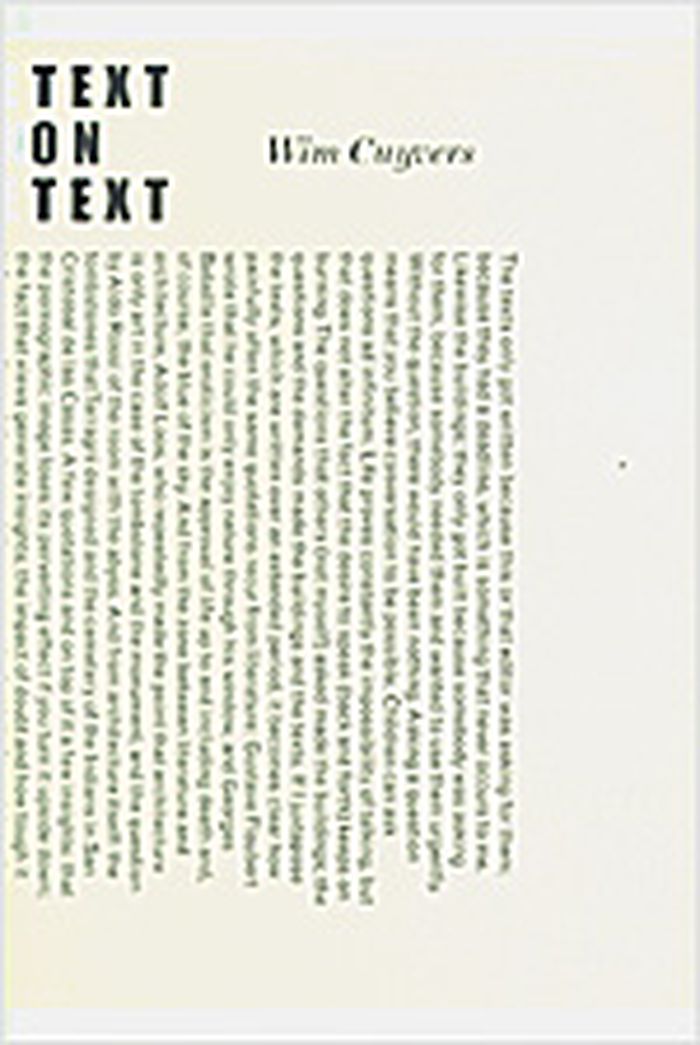livres
$46.95
(disponible sur commande)
Résumé:
Using language - speaking and understanding it - is a defining ability of human beings, woven into all human activity. It is therefore inevitable that it should be deeply implicated in the design, production, and use of buildings. Building legislation, design guides, competition and other briefs, architectural criticism, teaching and scholarly material, and the media all(...)
Théorie de l’architecture
novembre 2001, London
The words between the spaces : buildings and language
Actions:
Prix:
$46.95
(disponible sur commande)
Résumé:
Using language - speaking and understanding it - is a defining ability of human beings, woven into all human activity. It is therefore inevitable that it should be deeply implicated in the design, production, and use of buildings. Building legislation, design guides, competition and other briefs, architectural criticism, teaching and scholarly material, and the media all produce their characteristic texts. The authors use texts about such projects as Berlin's new Reichstag, Scotland's new Parliament, and the Auschwitz concentration camp museum to clarify the interaction between texts, design, critical debate, and response.
livres
novembre 2001, London
Théorie de l’architecture
$47.95
(disponible sur commande)
Résumé:
The author concentrates on fundamental texts in the study of architectural history with special reference to eighteenth and nineteenth century Britain. The texts under discussion address key themes or methods in the construction of architectural histories. Alongside this, philosophical or theoretical writings that address the abstract issues surrounding the main texts are(...)
Reading architectural history
Actions:
Prix:
$47.95
(disponible sur commande)
Résumé:
The author concentrates on fundamental texts in the study of architectural history with special reference to eighteenth and nineteenth century Britain. The texts under discussion address key themes or methods in the construction of architectural histories. Alongside this, philosophical or theoretical writings that address the abstract issues surrounding the main texts are presented as a kind of exegesis on the chosen texts. This, together with an introduction and discursive essays which preface each of the sections, present a trans-disciplinary discourse around the discipline of architectural history.
Théorie de l’architecture
livres
$59.95
(disponible sur commande)
Résumé:
"Why Architecture Matters" collects the best of Kamin's columns, incuding his acclaimed series advocating the intelligent development of Chicago's lakefront. The columns are organized thematically, providing an accessible and thought-provoking view of architecture in the 1990s, from soaring skyscrapers to vibrant immigrant neighborhoods, troubled public housing projects,(...)
Why architecture matters : lessons from Chicago
Actions:
Prix:
$59.95
(disponible sur commande)
Résumé:
"Why Architecture Matters" collects the best of Kamin's columns, incuding his acclaimed series advocating the intelligent development of Chicago's lakefront. The columns are organized thematically, providing an accessible and thought-provoking view of architecture in the 1990s, from soaring skyscrapers to vibrant immigrant neighborhoods, troubled public housing projects, and sprawling suburbs. Because Chicago serves as a barometer of national design trends, these writings shed new light on American architecture and urbanism during a decade that Kamin labels "The Nervous Nineties"--a period of unparalleled affluence and underlying anxiety, of soothing retro buildings and provocative new ones that express the frenzied state of modern life.
livres
octobre 2001, Chicago
Théorie de l’architecture
livres
$30.95
(disponible sur commande)
Résumé:
Avec neuf fusains d'Henri Gaudin.
Rythme et arts : les fins de l'architecture
Actions:
Prix:
$30.95
(disponible sur commande)
Résumé:
Avec neuf fusains d'Henri Gaudin.
livres
mai 2001, Lecques
Théorie de l’architecture
livres
$62.00
(disponible sur commande)
Résumé:
An inquiry into emergent media's rich lineage, "Devices of Wonder" explores the artful machines humans have used to augment visual perception. The encyclopedic cabinet of curiosities serves as a model for this study of the archaic instruments lurking in state-of-the art technology. Featured in "Devices of Wonder" are android automata, lunar landscapes, perspective(...)
Théorie de l’architecture
novembre 2001, Los Angeles
Devices of wonder from the world in a box to images on a screen
Actions:
Prix:
$62.00
(disponible sur commande)
Résumé:
An inquiry into emergent media's rich lineage, "Devices of Wonder" explores the artful machines humans have used to augment visual perception. The encyclopedic cabinet of curiosities serves as a model for this study of the archaic instruments lurking in state-of-the art technology. Featured in "Devices of Wonder" are android automata, lunar landscapes, perspective theaters, vues d'optique, microscopes, magnetic games, magic lanterns, camera obscuras, boxes by Joseph Cornell, Lucas Samaras's Mirrored Room, Suzanne Anker's Zoosemiotics, Mark Tilden's UniBug 3.1, panoramic works by Jeff Wall and Giovanni Lusieri, paintings by Jean-Baptiste Chardin and Joseph Wright of Derby, projections by Diana Thater and James Turrell, and a pop-up book by Kara Walker. Barbara Stafford's introduction weaves these fascinating artifacts into a provocative narrative analyzing the complex links between old and new media. Her wide-ranging investigation is complemented by thirty-one short essays in which Frances Terpak tracks the often surprising connections among individual items. Like the cabinet of curiosities, "Devices of Wonder" functions as an analogical instrument, reframing the beautiful "eye machines" that continue to mediate our encounters with the world. This book is published in conjunction with an exhibition at the Getty from November 13, 2001, through February 6, 2002.
livres
novembre 2001, Los Angeles
Théorie de l’architecture
livres
$29.95
(disponible sur commande)
Résumé:
The Cold War was the war that never happened. Nonetheless, it spurred the most significant buildup of military contingency this country has ever known: from the bunkers of Greenbrier, West Virginia, to the "proving grounds" of Nevada, where entire cities were built only to be vaporized. The Cold War was waged on a territory that knew no boundaries but left few traces.(...)
Survival city : adventures among the ruins of atomic America
Actions:
Prix:
$29.95
(disponible sur commande)
Résumé:
The Cold War was the war that never happened. Nonetheless, it spurred the most significant buildup of military contingency this country has ever known: from the bunkers of Greenbrier, West Virginia, to the "proving grounds" of Nevada, where entire cities were built only to be vaporized. The Cold War was waged on a territory that knew no boundaries but left few traces. In this fascinating--and at turns frightening and comical--travelogue to the hidden battlefields of the Cold War, Tom Vanderbilt travels the Interstate (itself a product of the Cold War) to uncover the sites of Cold War architecture and reflect on their lasting heritage. In the process, Vanderbilt shows us what the Cold War landscape looked like, how architecture tried to adapt to the threat of mass destruction, how cities coped with the knowledge that they were nuclear targets, and finally what remains of the Cold War theater today, both its visible and invisible legacies. Ultimately, Vanderbilt gives us a deep look into our cultural soul, the dreams and fears that drove us for the last half of the 20th century.
livres
mars 2002, New York
Théorie de l’architecture
$26.00
(disponible sur commande)
Résumé:
"Bodyline" is a visual essay on the human body, approaches its subject in a spirit both playful and seriously experimental. Organised by themes in turn figurative and abstract, organic, and mechanical, immaterial, "Bodyline" contains not one predictable image of the body. Instead it uses diffracted views to conjure seven alternative visions of the flesh in the age of(...)
Théorie de l’architecture
janvier 1900, London
Bodyline : the end of our meta-mechanical body
Actions:
Prix:
$26.00
(disponible sur commande)
Résumé:
"Bodyline" is a visual essay on the human body, approaches its subject in a spirit both playful and seriously experimental. Organised by themes in turn figurative and abstract, organic, and mechanical, immaterial, "Bodyline" contains not one predictable image of the body. Instead it uses diffracted views to conjure seven alternative visions of the flesh in the age of meta-mechanical reproduction, reconstructing the human physique by means of synthetic images, clothing patterns and technical blueprints. As such, "Bodyline" is a much about perception and delineation as it is about the body. The book is devided into three chapters loosely based on Robert Hughe's "Nothing if not critical". Here, through, the original categories are reversed : "Ancestors" explores the latest paradigms of virtual bodies, the computer-generated meshes of the gaming industry, which are also figurative; "Moderns", which constitutes the book's central exploration, features twentieth-century micro-narratives of pattern and garnment in which the body is already all but unrecognisable; and "Contemporaries" celebrates the reflections of self-portraiture through the projective network of Mongean geometry. The seven images of the body contained in this book - "Ectopic birth" (Nazila Maghzian), "How tall am I?" (Sharon Givony), "Vital points" (Eiichi Matsuda), "Inside out" (Kun-Min Kim), "Growth and decay" (Lawrence Ler), "Tiny deaths" (Carolin Hinne) and "10 years after" (Ema Bonifacio) - are accompagned by concise, literary texts.
Théorie de l’architecture
$39.95
(disponible sur commande)
Résumé:
1950-2000. Cinquante années de pratique, cinquante années de fréquentations d'un milieu professionnel disparate, contradictoire, passionné et passionnel mais toujours surprenant, celui des architectes. Puiser dans ce vivier, y prélever quelques échantillons caractéristiques et les livrer à cru au lecteur, peut être considéré comme éclairant pour l'architecture. Certes(...)
Portraits d'architectes (impressionnistes et véridiques)
Actions:
Prix:
$39.95
(disponible sur commande)
Résumé:
1950-2000. Cinquante années de pratique, cinquante années de fréquentations d'un milieu professionnel disparate, contradictoire, passionné et passionnel mais toujours surprenant, celui des architectes. Puiser dans ce vivier, y prélever quelques échantillons caractéristiques et les livrer à cru au lecteur, peut être considéré comme éclairant pour l'architecture. Certes il ne s'agit là que de spécimens, mais ils ont l'avantage d'être saisis sur le vif dans leur vécu quotidien, en une sorte d'instantané photographique. Il reste qu'à la lumière rouge, dans le bain du révélateur, se distingue un peu de la conscience profonde de chacun.
Théorie de l’architecture
$44.50
(disponible sur commande)
Résumé:
L’originalité même de cet ouvrage précis, documenté, neuf dans le champ de la critique architecturale, tient en sa capacité à démontrer que le lieu – c’est-à-dire l’espace singulier – a été travaillé et transformé par l’architecture à travers l’histoire, les cultures et les styles de toutes les époques, de tous les pays. Le lieu qui n’est jamais neutre permet, et mieux(...)
Théorie de l’architecture
janvier 1900, Paris
Édifier : l'architecture et le lieu
Actions:
Prix:
$44.50
(disponible sur commande)
Résumé:
L’originalité même de cet ouvrage précis, documenté, neuf dans le champ de la critique architecturale, tient en sa capacité à démontrer que le lieu – c’est-à-dire l’espace singulier – a été travaillé et transformé par l’architecture à travers l’histoire, les cultures et les styles de toutes les époques, de tous les pays. Le lieu qui n’est jamais neutre permet, et mieux encore favorise, promeut un projet d’espace qui trouve dans l’architecture une résolution stable à travers la production et la cristallisation d’une forme lorsque celle-ci s’associe sur la durée à ses environnements naturel et social. « Le lieu est un espace inscrit, qualifié, valorisé. » Au moment où les villes historiques semblent vouées à disparaître dans des agglomérations qui ne sont plus des lieux parce qu’y vivre ensemble devient impossible, ces dernières « expriment » l’absence du projet par lequel elles se sont extraites du vide, se sont développées et se sont étendues sur un vaste territoire par la puissance (symbolique, imaginaire…) issue de la volonté d’édifier. Loin de ressasser un passé désormais révolu, défait par les coups de boutoir d’une modernité aujourd’hui dévastatrice, les auteurs ont pointé la radicalité du phénomène de destruction du projet de la ville en tant que lieu propre de l’édifier. Grâce à une recherche féconde menée depuis plusieurs années, à une grande érudition, et à un savoir puisant ses exemples dans le patrimoine architectural mondial, ils nous invitent à considérer l’édifier comme une dimension essentielle de notre existence.
Théorie de l’architecture
Text on text
$37.50
(disponible sur commande)
Résumé:
Belgian architect Wim Cuyvers considers architecture not as a goal but more as a tool with which a result can be reached. This publication, with a glow in the dark cover, presents a collection of his writings from the last five years, that introduce us to his manner of looking at architecture, his literary inspirations and his passions.
Text on text
Actions:
Prix:
$37.50
(disponible sur commande)
Résumé:
Belgian architect Wim Cuyvers considers architecture not as a goal but more as a tool with which a result can be reached. This publication, with a glow in the dark cover, presents a collection of his writings from the last five years, that introduce us to his manner of looking at architecture, his literary inspirations and his passions.
Théorie de l’architecture
